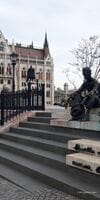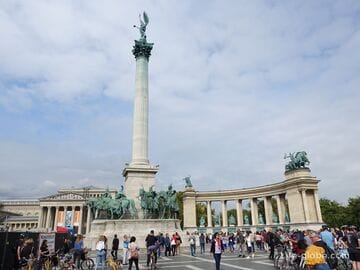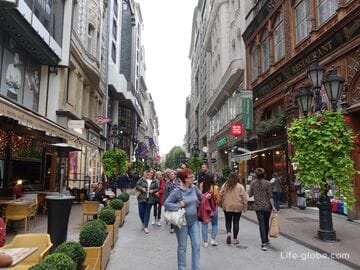Lajos Kossuth Square (Hungarian name - Kossuth Lajos ter / Kossuth ter) is one of the most famous and visited city squares in Budapest.
Located in the Kossuth square on the side of Pushta, near the waterfront and major tourist routes through the city.
This area first appeared in regards to the location in 1804. Over time history has worn several names. Its current name the area was in 1927, in honor of Hungarian nobleman, lawyer, politician, statesman, revolutionary and Governor-President of Hungary in the period of the Hungarian revolution of 1848-1849 - of Lajos Kossuth.
Currently, the area of Lajos Kossuth called "main square of the country."
On the square are located some of the important historical buildings of Hungary as well as memorials and monuments.
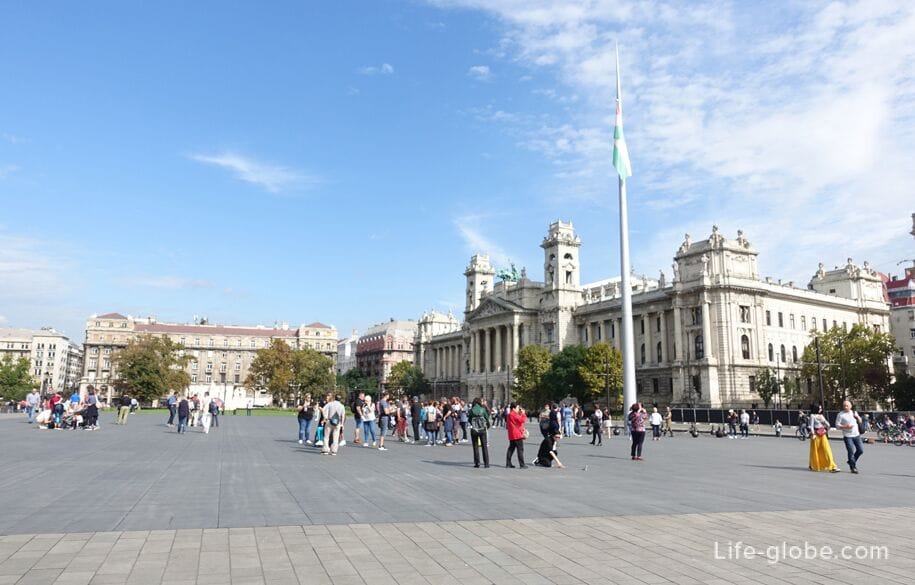
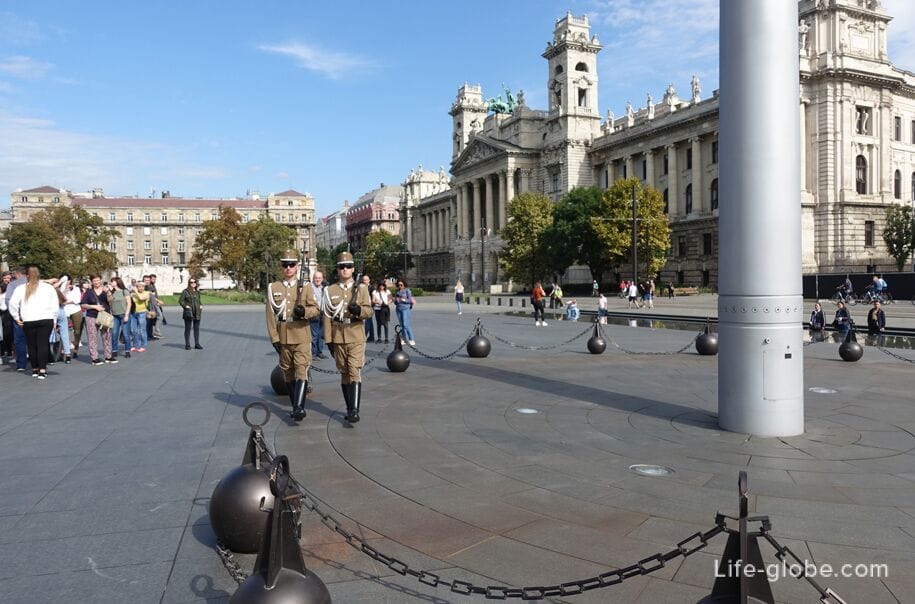
Attractions the Kossuth square in Budapest
The Hungarian Parliament building
The most important and recognizable building in the square is the neo-Gothic Hungarian Parliament building (Orszaghaz - Orszaghaz).
The construction of the building was carried out in the period from 1885 to the years 1902-04. After the construction of this impressive work of art became the symbol of Hungary and its capital.
The Western facade of the Hungarian Parliament building runs parallel to the Danube, and the other three (East, North and South) faces directly on the Kossuth square.
Prominent Domed tower of the Parliament buildings, heading into the heavens graceful spire has a height of 96 meters, the same height as the St. Stephen's Basilica, located a kilometer from the Kossuth square.
In addition to the inspection of the facades of the houses of Parliament, perhaps visiting some of the internal spaces in the tour group. Read more about Hungarian Parliament building in Budapest...
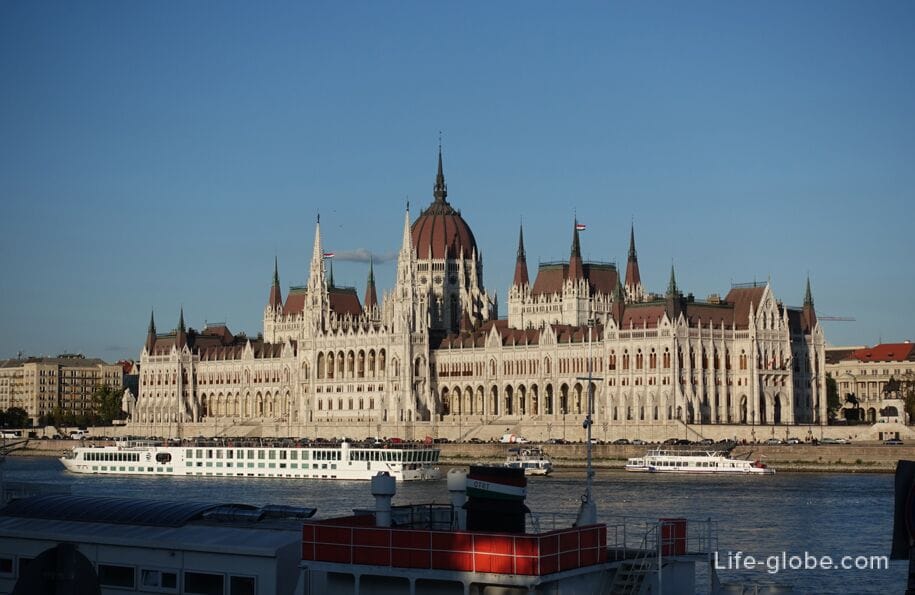
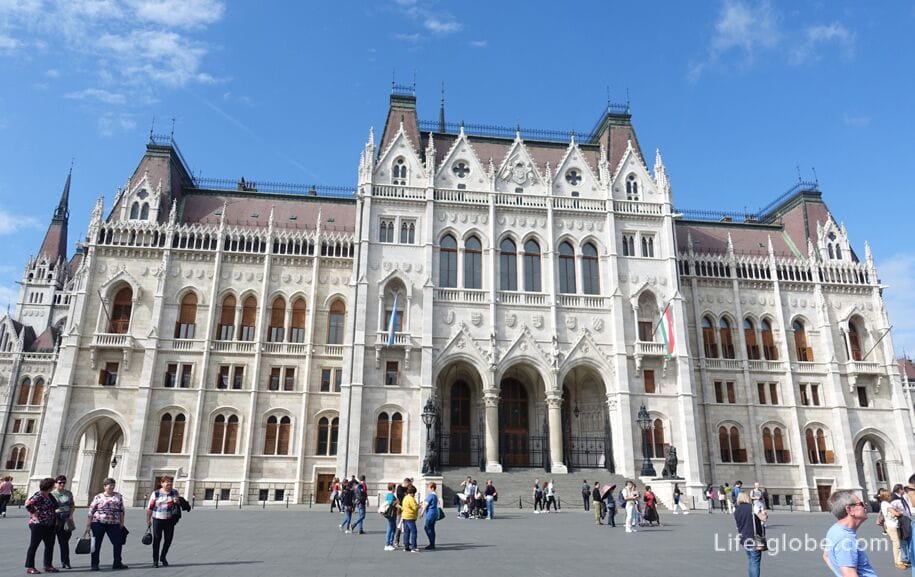
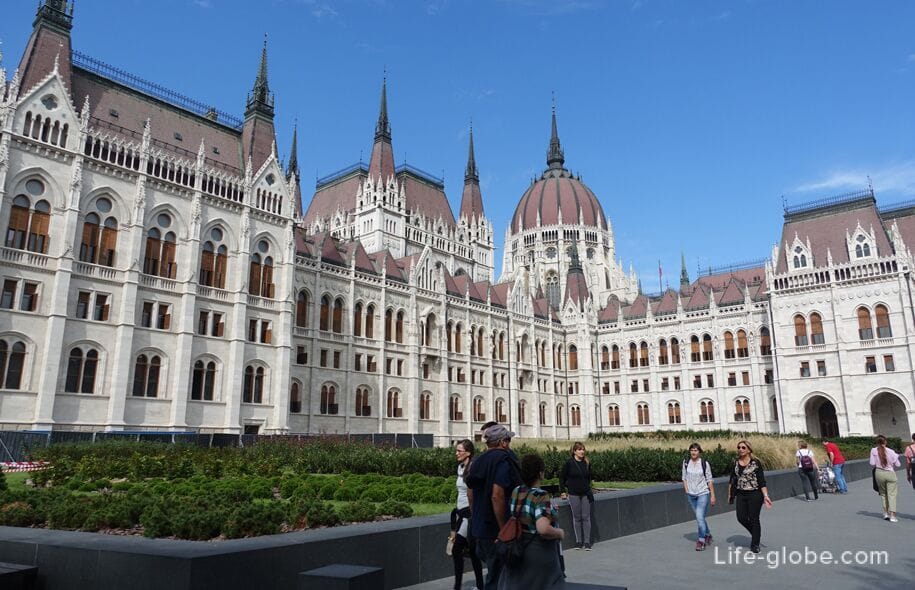
The Palace of justice
Palace of justice (Igazsagügyi Palota) - the second building in the square, conspicuous and located opposite the Hungarian Parliament building.
The original building in neo-Renaissance style (eclectic), erected between 1893 and 1896 years as the Palace of Justice and Royal Hungarian house (Magyar Kiralyi Kuria) was intended to accommodate the Royal of the jury, the General Prosecutor's office of Budapest and the Royal Prosecutor's office.
After the Second world war in 1949 the building was opened at the Hungarian Museum of labour, in April 1957 a large part of it was renamed into Hungarian national gallery, and the wing facing the street Alkotmany, became the Institute of history of the party. From 1972 to 1975 the gallery moved into the walls of the Royal Palace on the Buda side.
The vacated space of the Palace was transferred to the Hungarian ethnographic Museum (Neprajzi Muzeum), who worked in the Palace until 2017, but after the move to the new building. Plans final relocation of the Museum will take place in the year 2020 to a new building in the city Park, and the building of the Palace of justice will again operate the mansion.
To clarify the new placement of the Museum opening dates and hours of operation, and the cost of tickets, information is recommended to clarify on the website.
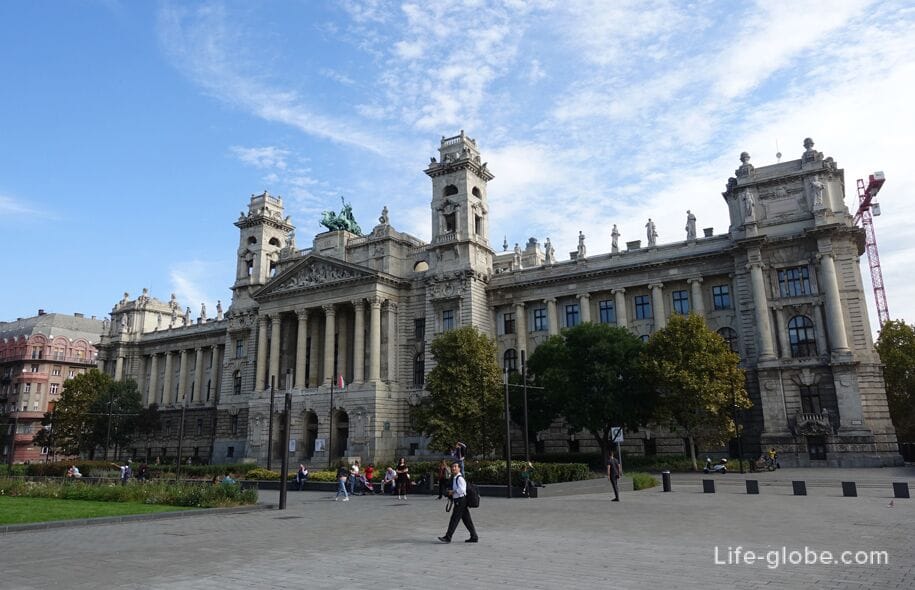
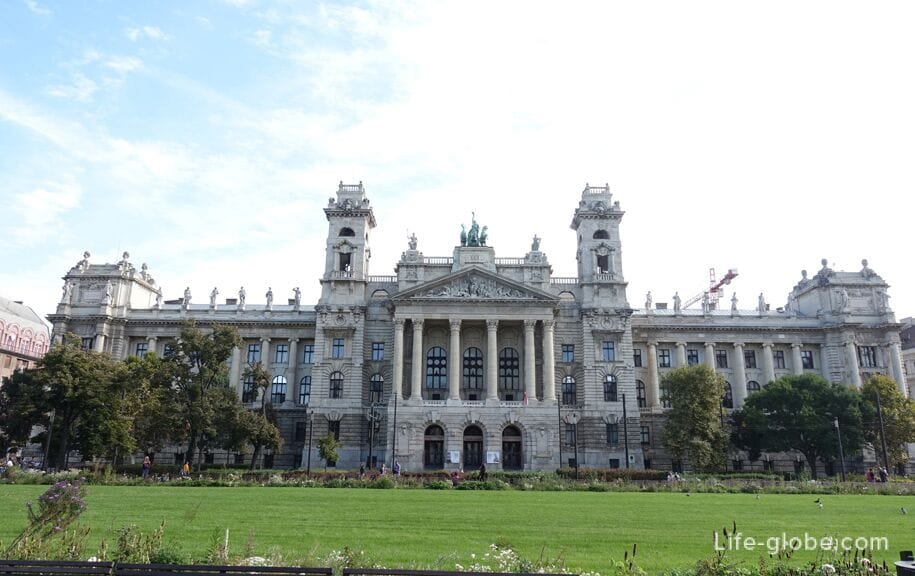
The building of the Ministry of agriculture
The eclectic building of the Ministry of agriculture (Agrarminiszterium) was built between 1885 and 1887 years.
Along the entire length of the main facade of the building facing the Kossuth square, stretches a gallery with a number of arcades, where the sculptures.
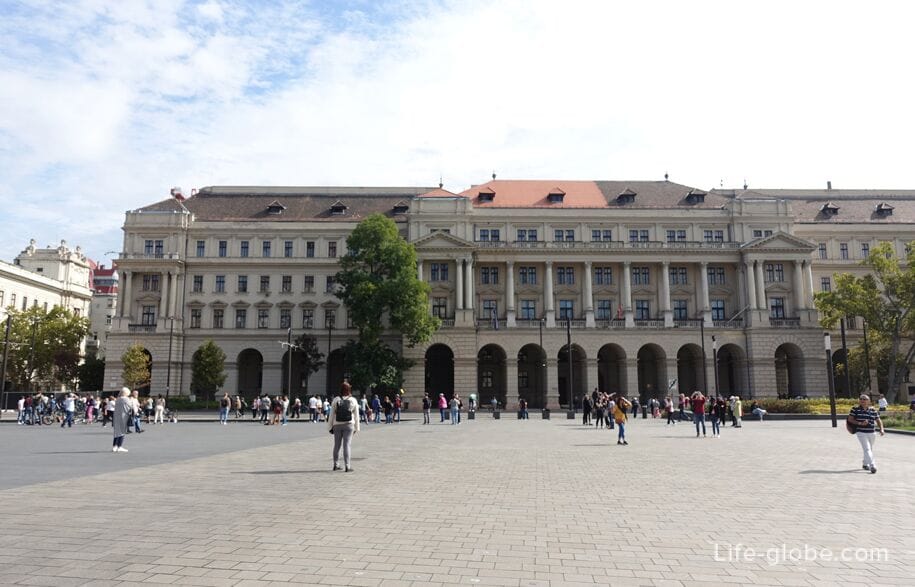
Chocolate Museum
The Museum shop of Szamos chocolate, located on the second floor of the cafe Szamos, at the address: Kossuth Lajos ter 10, represents the history of cacao and chocolate, the culture of consumption of hot chocolate, the storage form of chocolates and other information related to chocolate.
The Museum features articles made of chocolate and marzipan, for example, a miniature of the Parliament, articles for the coronation and world's largest marzipan, created by Jean-Etienne Liotard the.
Also in the Museum, when pre-booking online, you can order a chocolate tour, during which, besides visiting the Museum's exhibitions, offers "chocolate molding" - when a chocolate master chocolate pouring table, and the guests decorate it to your liking and a short film about the creation of chocolate, which clearly shows how, step by step to make chocolate.
Museum website: csokolademuzeum.
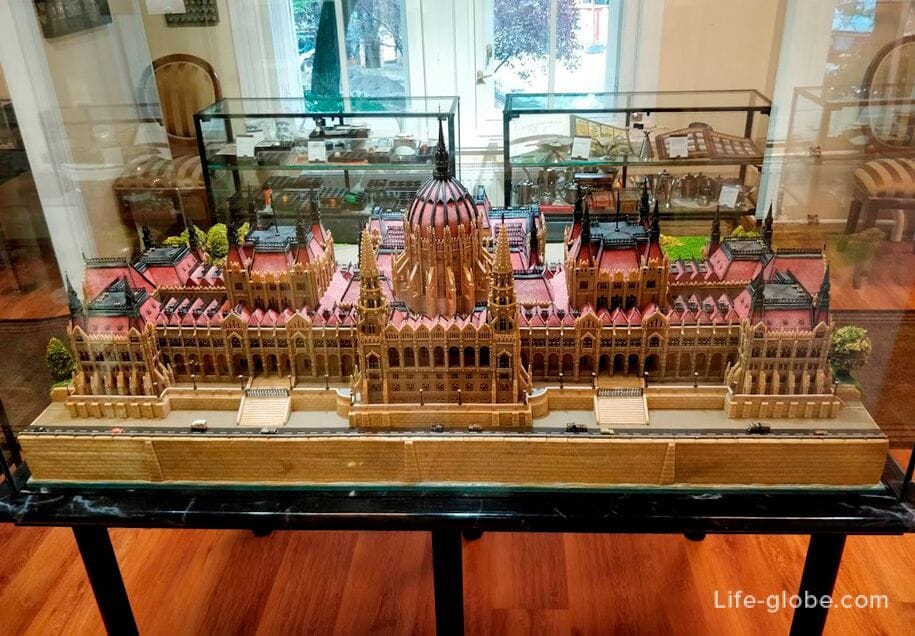
Monuments and statues on Kossuth square
In addition to the historic buildings on Kossuth square are monuments, statues and memorials, the main ones are:
- equestrian statue of count Gyula andrássy, located on a high pedestal in front of the southern facade of the Hungarian Parliament building, was opened on 2 December 1906 in the presence of the Hungarian king Joseph I.
The statue was damaged during the Second world war. Later the monument was removed from the square, reconstructed on the basis of photographs and returned to his former place on 5 may 2015;

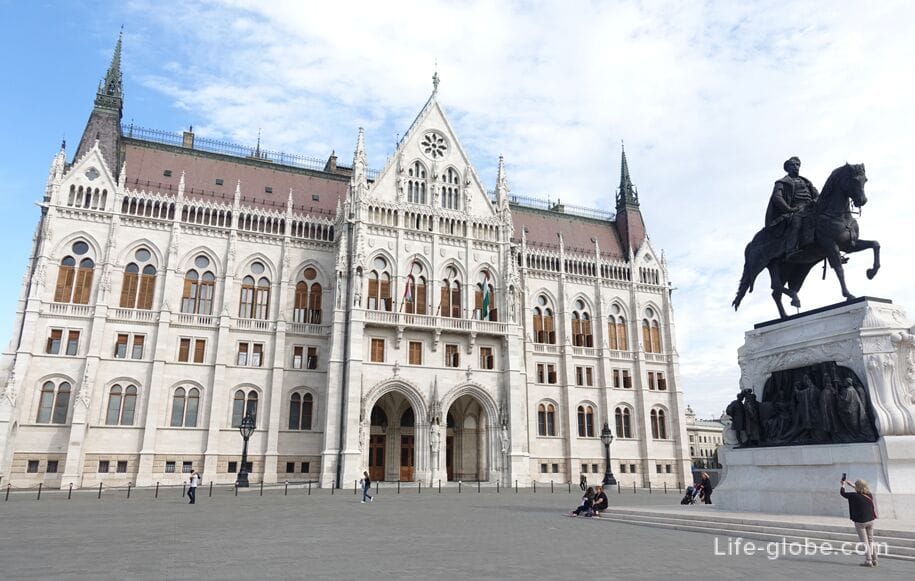
- the equestrian statue of Ferenc Rakoczi, located near the building of the Ministry of agriculture, was dedicated to the 200th anniversary of the death (1735) Hungarian nobleman, the descendant of a Transylvanian family and the hero of the war for independence.
The monument was opened in 1937.
This statue was the only statue, erected before 1945 and preserved after the Second world war;

- monument to Lajos Kossuth, located in the North-Eastern part of the area, was established in 1927 and represents a composition, the main figure is Lajos Kossuth. Other figures depict members of the first responsible Hungarian government, was appointed in 1848.
During the Communist regime after the Second world war the figure of Kossuth was not deemed sufficiently revolutionary, so in 1952 it was removed and replaced by a more ideological. The original sculpture group was moved to the city of Dombovar, where he survived to the present day.
Based on the sample of the original monument and statue of Kossuth group of statues, the monument was reconstructed of more durable rock and is open on 3 March 2015;
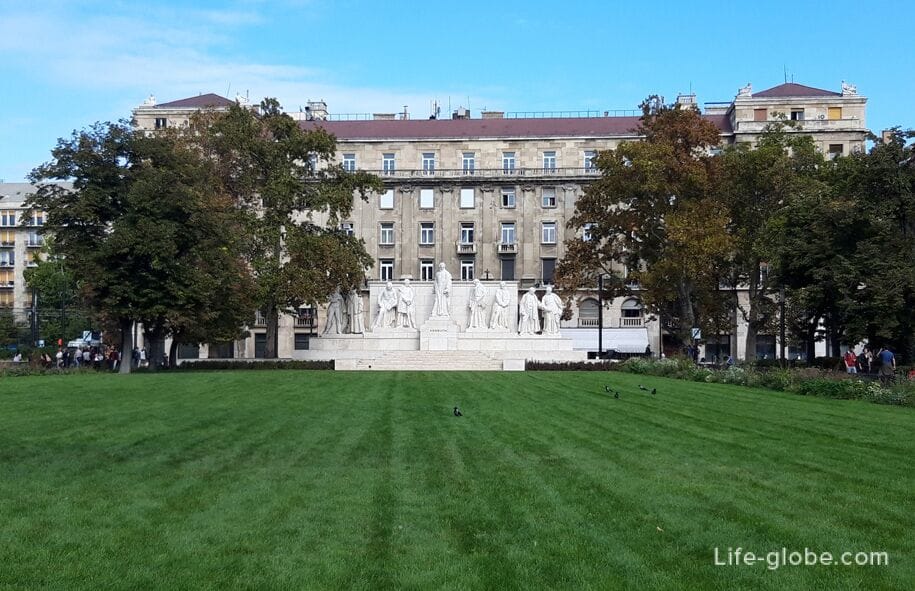
- monument of count istván Tisza, near the Northern facade of the Hungarian Parliament building and opened on 22 April 1934.
During the Second world war the monument was damaged during the siege of Budapest, and in the spring of 1945, unknown persons demolished the main figure of the statue.
The reconstructed monument of istván Tisza was restored on 9 June 2014;
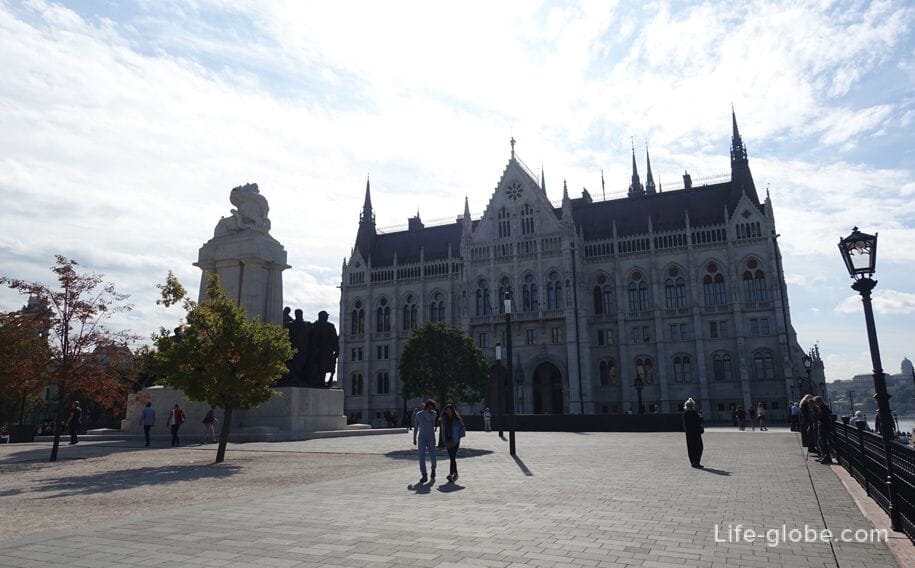
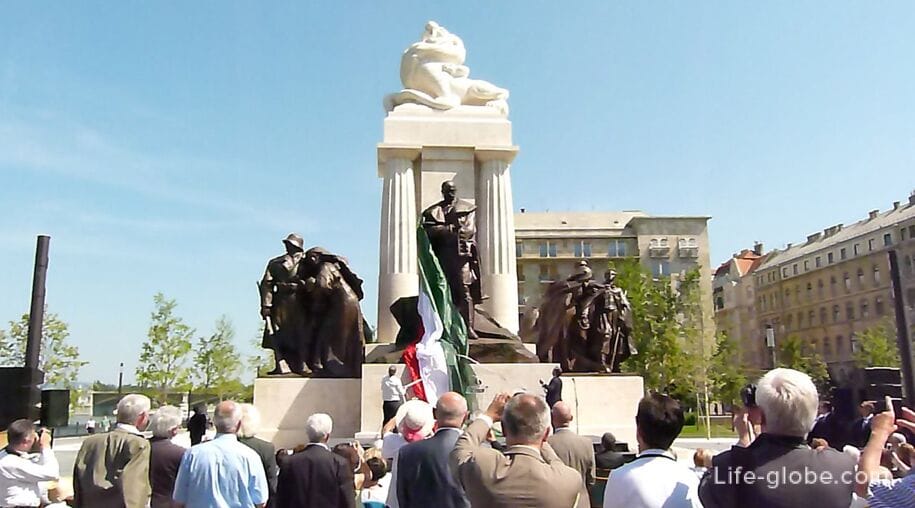
- a statue-a monument to Attila józsef, located on the stairs leading to the center of the Kossuth square, in the South-Western part, near the Pest embankment and of the sculpture of "Shoes on the Danube promenade".
Hungarian poet is depicted sitting on the steps and ran thoughtfully a sad look to the ground, with his hat in his hands and a cloak carelessly thrown around. Attila józsef committed suicide at the age of 32 by throwing himself under a train.

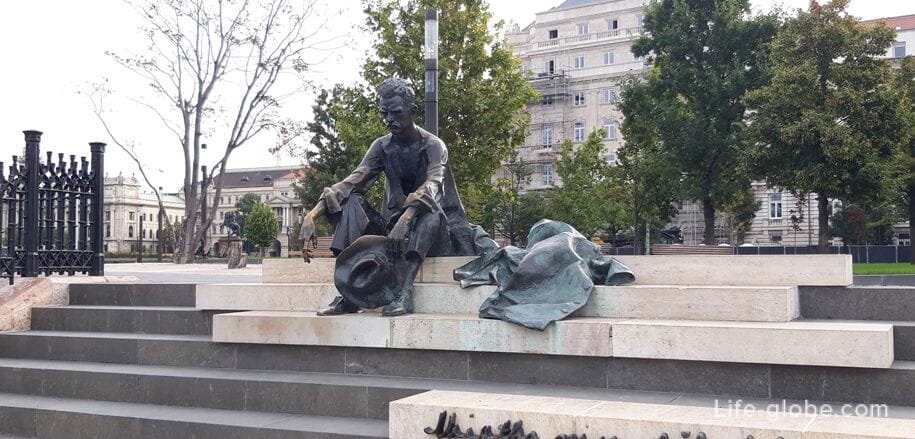
Right (South) of the monument stands a building of the Ministry of justice.
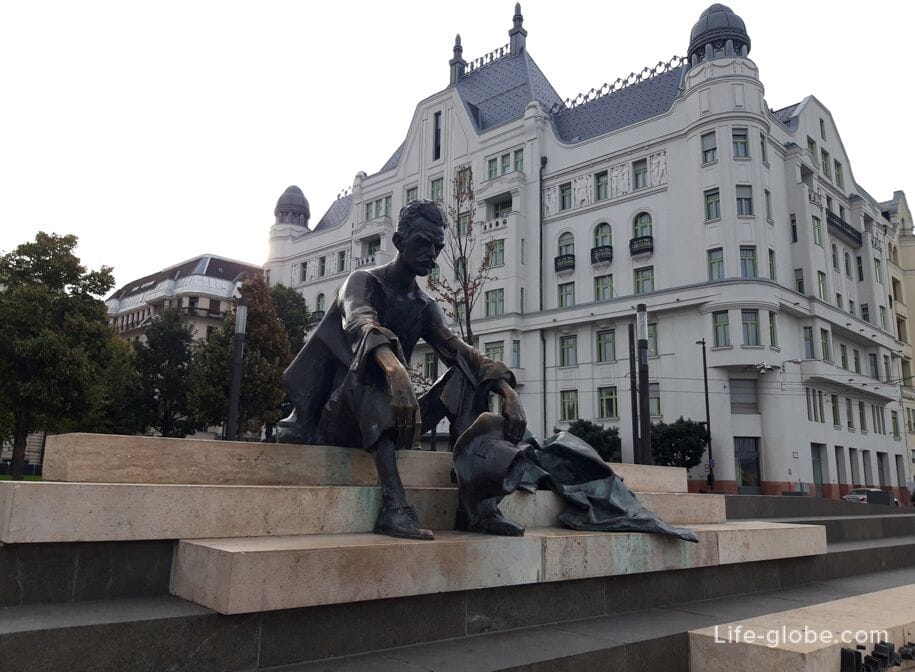
How to get to Kossuth square: on foot, by taxi, car, metro line M2, tram # 2.




